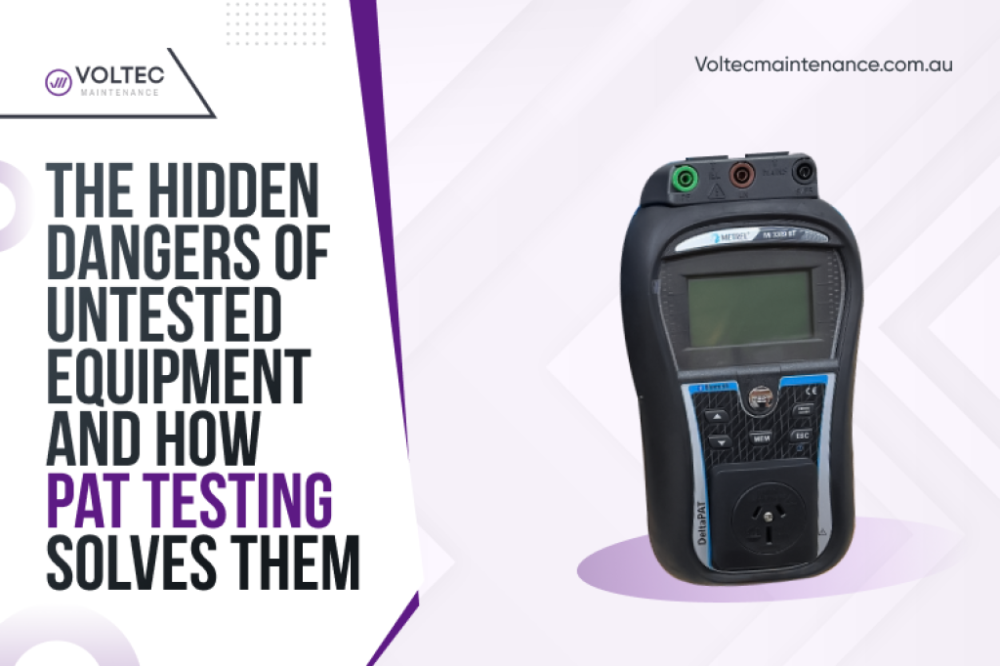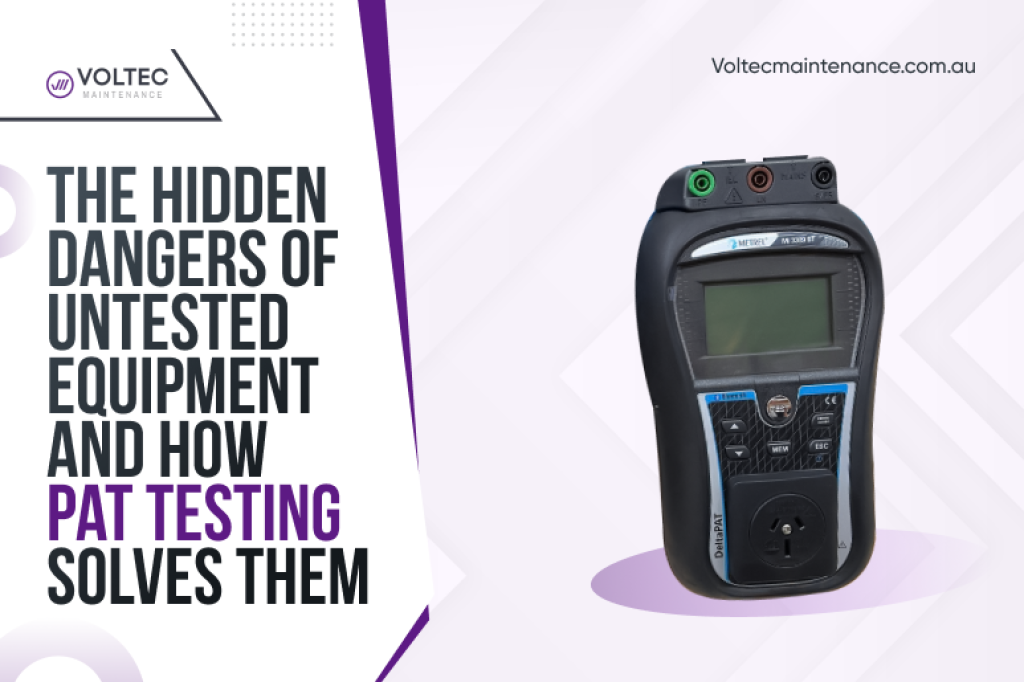The Hidden Dangers Of Untested Equipment-And How PAT Testing Solves Them
Businesses depend heavily on electrical equipment to maintain productivity and operational efficiency. Yet, this very reliance can pose a risk if the equipment is not adequately tested and maintained. Overlooking Portable Appliance Testing (PAT Testing) isn’t just a safety oversight—it’s a legal and financial gamble that could cost your business dearly.
What is PAT Testing?
Portable Appliance Testing (commonly referred to as Test and Tag in Australia) involves the inspection and testing of electrical equipment to ensure it is safe for use. This is a key compliance requirement under AS/NZS 3760 standards and is vital in any commercial setting—whether it's an office, warehouse, hospitality venue, or construction site.
The Risks of Skipping PAT Testing
Fire Hazards:
Faulty equipment is one of the leading causes of electrical fires in commercial buildings. Damaged cords, overloaded power boards, or ungrounded appliances can quickly escalate into a dangerous incident if not detected in time.
Electric Shock Risks:
Employees who interact with untested equipment are at risk of electrocution or injury—especially in industries where high-voltage tools or heavy machinery are involved.
Operational Downtime:
A single electrical failure can bring your operations to a halt. Commercial Industrial Electrician conducts PAT Testing to help detect faults early, preventing sudden outages and maintaining workflow continuity.
Non-Compliance Penalties:
Skipping Test and Tag doesn’t just pose safety risks—it also breaches workplace safety laws. In the event of an audit or incident, failure to comply with regulations can result in hefty fines and liability claims.
How PAT Testing Protects Your Business?
PAT Testing is a proactive risk management tool. It provides documented proof of compliance, helps with insurance claims, and gives peace of mind knowing your equipment is safe to operate. Testing includes:
- Visual inspections for damage or wear
- Electrical Appliance Testing to check insulation resistance and earth continuity
- Tagging and reporting to log test results, dates, and re-test schedules
This level of diligence shows your commitment to employee safety and operational excellence.
Why Businesses Should Test Regularly
Depending on your business environment, equipment should be tested at intervals ranging from every 3 months (construction) to annually (offices). Establishing a scheduled PAT Testing routine reduces risk and keeps your audit ready.
Choose Voltec’s Expert Solutions...
At Voltec Maintenance, we do more than just test and tag—we deliver peace of mind. Our team provides comprehensive Electrical Inspection and Testing reports, tagged equipment, and expert advice tailored to your industry. We help you meet legal obligations while maintaining a safe and productive workplace. With prompt service and zero disruption to operations, Voltec is the reliable partner your business can trust.
Read Other Blogs
-
 The Importance of Test & Tag for Hotels, Restaurants & Cafes
The Importance of Test & Tag for Hotels, Restaurants & Cafes -
 5 Checks to Know If Your Exit Lights Would Work During an Emergency
5 Checks to Know If Your Exit Lights Would Work During an Emergency -
 How Professional Smoke Alarm Servicing Minimises Workplace Disruptions?
How Professional Smoke Alarm Servicing Minimises Workplace Disruptions? -
 How Routine RCD Testing Prevents Downtime and Compliance Issues?
How Routine RCD Testing Prevents Downtime and Compliance Issues? -
 The Role of Smoke-Alarm Systems for Business Continuity in Healthcare Facilities
The Role of Smoke-Alarm Systems for Business Continuity in Healthcare Facilities -
 How Poorly Maintained Exit Lights Undermine Emergency Evacuation Efficiency?
How Poorly Maintained Exit Lights Undermine Emergency Evacuation Efficiency? -
 How Expert Thermal Imaging Services Can Keep Businesses Running In Hostile Environments?
How Expert Thermal Imaging Services Can Keep Businesses Running In Hostile Environments? -
 Stand-Alone Emergency Alarms: A Smart Investment in Business Continuity and Compliance
Stand-Alone Emergency Alarms: A Smart Investment in Business Continuity and Compliance -
 Why Warehousing Leaders Choose Professional Smoke Alarm Systems?
Why Warehousing Leaders Choose Professional Smoke Alarm Systems? -
 Why Public Premises Can’t Afford to Ignore Emergency Exit Lighting?
Why Public Premises Can’t Afford to Ignore Emergency Exit Lighting?

